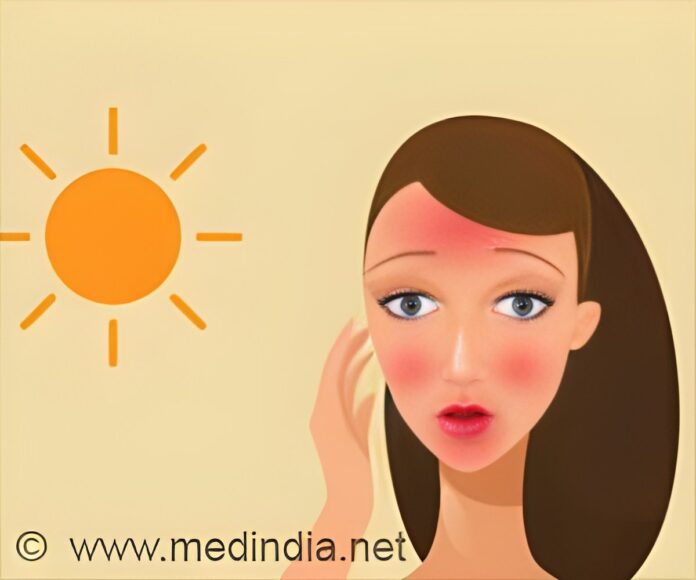Inflammation fights infection but can also fuel skin cancer, and how UV damage shapes this response is still unclear.
Sunlight is essential for human health, playing a vital role in helping the body produce important nutrients like vitamin D. But while moderate sun exposure is beneficial, too much of it can be harmful—especially when it comes to increasing the risk of skin cancer. ()
How UV Light Breaks Down Skin Defenses
A new study published in Nature Communications by researchers at the University of Chicago sheds light on how prolonged ultraviolet (UV) exposure contributes to skin cancer at the molecular level. The team discovered that extended UV radiation can trigger harmful inflammation in skin cells by breaking down a critical protein called YTHDF2.
YTHDF2 functions like a protective gatekeeper, helping maintain normal cellular activity and preventing healthy skin cells from transforming into cancerous ones. It does this by regulating RNA metabolism, a fundamental process that keeps cells stable and functioning properly.
When UV exposure reduces YTHDF2 levels, this protective barrier weakens, allowing inflammation to escalate and increasing the likelihood of cancer development. These findings not only deepen scientific understanding of how skin cancer begins but also point toward new possibilities for prevention and treatment, particularly approaches that could stabilize or enhance YTHDF2’s protective role.
UV Exposure Drives Most Skin Cancer Cases in the U.S.
Each year, nearly 5.4 million people in the United States are diagnosed with skin cancer, with more than 90% of cases attributed to excessive UV exposure. UV rays can damage DNA and cause oxidative stress and inflammation in skin cells —leading to redness, pain and blistering, commonly known as sunburn.
“We’re interested in understanding how inflammation caused by UV exposure contributes to the development of skin cancer,” said Yu-Ying He, PhD, Professor of Medicine in the Section of Dermatology at the University of Chicago.
RNA or ribonucleic acid is an essential molecule that helps convert genetic information into proteins. A special class known as non-coding RNAs regulates gene expression without producing proteins. These molecules typically function in either the nucleus, where a cell’s DNA is stored or the cytoplasm, where most cellular activity occurs.
He’s laboratory studies how environmental stressors, such as UV radiation or arsenic in drinking water, affect molecular pathways and damage cellular systems, leading to cancer. Through screening various enzymes, the researchers found that UV exposure causes a marked decrease in levels of YTHDF2, a “reader” protein that specifically binds to RNA sequences marked with a chemical tag known as N6-methyladenosine (m6A).
“When we removed YTHDF2 from skin cells, we saw that UV-triggered inflammation was much worse,” He said. “This suggests that the YTHDF2 protein plays a key role in suppressing inflammatory responses.”
Although inflammation is essential for fighting off infections, it also plays a major role in causing life-threatening diseases, including cancer. However, the molecular mechanisms that regulate this response, especially after UV damage, are not well understood.
NA–TLR3 Interaction Drives UV-Induced Cancer Pathways
Using multi-omics analysis and additional cellular assays, the research team found that YTHDF2 binds to a specific non-coding RNA known as U6, which is modified by m6A and classified as a small nuclear RNA (snRNA). Under UV stress, cancer cells showed increased levels of U6 snRNA, and these modified RNAs were found to interact with toll-like receptor 3 (TLR3), an immune sensor known to activate inflammatory pathways linked to cancer.
Surprisingly, these interactions occurred within endosomes, where cellular compartments are typically involved in recycling materials, not where U6 snRNA is usually located.
“We spent a lot of time figuring out how these non-coding RNAs get to the endosome, since that’s not where they usually reside,” He explained. “For the first time, we showed that a protein called SDT2 transports U6 into the endosome, and YTHDF2 travels with it.”
Once both YTHDF2 and m6A-modified U6 RNA arrive at the endosome, YTHDF2 blocks the RNA from activating TLR3. However, when YTHDF2 is absent — such as after UV damage, the RNA freely binds to TLR3, triggering harmful inflammation.
“Our study uncovers a new layer of biological regulation, a surveillance system through YTHDF2 that helps protect the body from excessive inflammation and inflammatory damage,” He said.
The findings could open the door to new strategies for preventing or treating UV-induced skin cancer by targeting the RNA-protein interactions that regulate inflammation.
References:
- YTHDF2 regulates self non-coding RNA metabolism to control inflammation and tumorigenesis – (https://www.nature.com/articles/s41467-025-64898-7)
Source-Eurekalert
